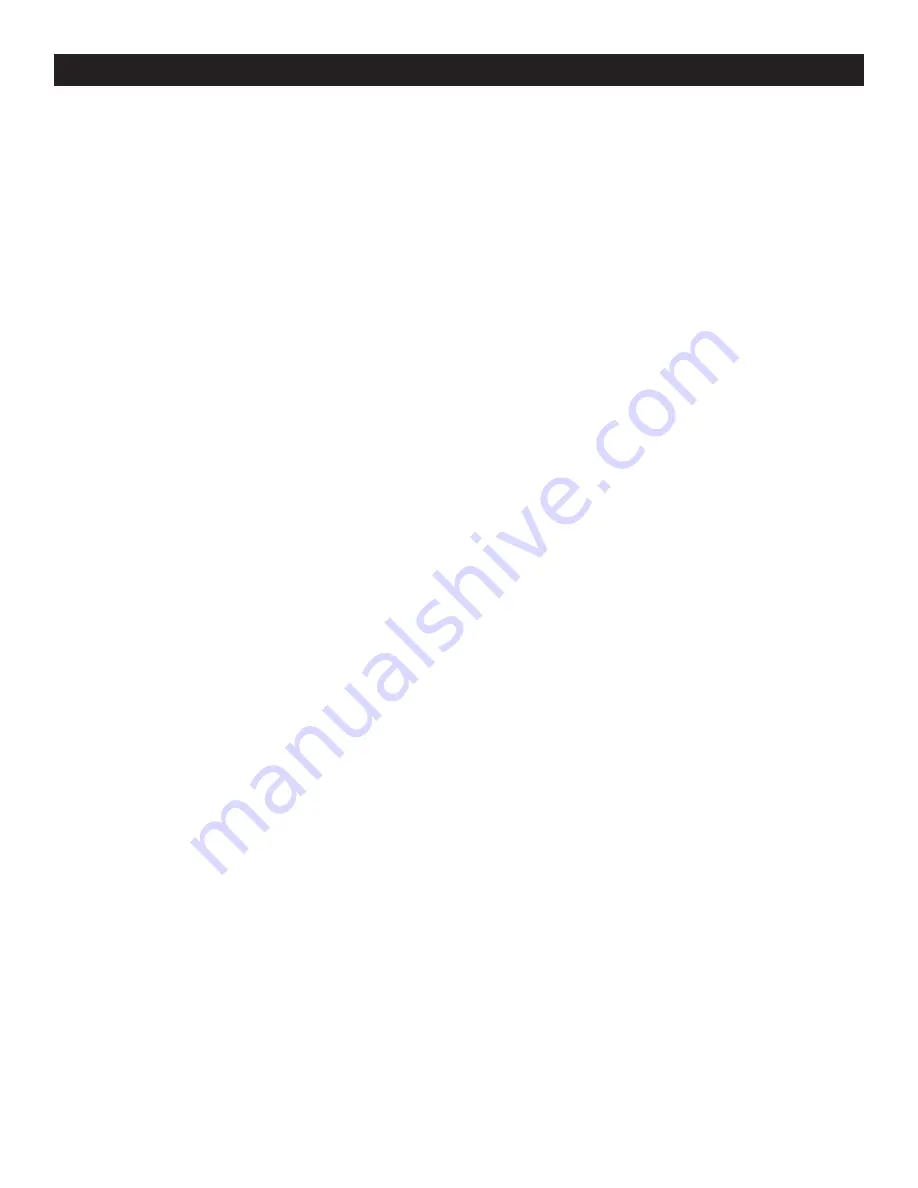
CUE POINT, page 18). The red CUE LED will glow
when the unit is in cue mode The LED will also
flash every time a new CUE POINT is set. The
CUE button can be held down to momentarily
play the CD. When you release the CUE button it
instantly returns to the CUE POINT. You can also
tap the CUE button to create a BOP EFFECT (for
definition of BOP EFFECT, see page 24).
23. PLAY/PAUSE BUTTON -
Each press of the
PLAY/PAUSE BUTTON causes the operation to
change from play to pause or from pause to play.
While in play mode the green play LED will glow,
and while in pause mode the green play LED will
flash.
24. JOG WHEEL/EFFECTS PLATTER -
This
wheel has three functions;
A.
The jog wheel will act as a frame search con-
trol when the CD is in pause or cue mode,
allowing you to set a cue point.
B.
The wheel also works as a pitch bend during
Playback. Turning the wheel clockwise will
increase the pitch percentage up to 100%,
and turning the wheel in the counter-clockwise
direction will decrease the pitch percentage
down to -100%. The pitch bend will be deter-
mined on how long you turn the jog wheel
continuously.
C.
The jog wheel will also control the bop func-
tion and a speed effect when the jog wheel
effect function is activated, see page 32.
25. TEMPO LOCK FUNCTION -
This button
activates the TEMPO LOCK function. This func-
tion allows you to use the PITCH SLIDER to
speed up or slow down playback speed without
altering the tonal pitch of the track. When this
function is not engaged the original tonal pitch
of the track will be altered giving you the "chip-
munk" effect when a track is played at a high rate
of speed, or the "James Earl Jones" effect when
a track is slowed to much. To turn this function
off, press and hold down this button for at least
1 second and then release.
26.
(
-) PITCH BEND BUTTON -
The
(-)
pitch
bend function creates a momentary “Slow Down”
in the CD’s BPM’s (Beats per minute) while it is
GENERAL FUNCTIONS AND CONTROLS (Cont.)
playing. This will allow you to match the beats
between two playing CD’s or other playing music
source. Remember, this is a momentary function.
When you remove your finger from the pitch but-
ton, the BPM’s will automatically return to
PITCH
SLIDERS (36)
pitch value Holding down this but-
ton will give a maximum of -100% pitch. Use
this function to slow to another playing music
source. Be sure to notice that this function is a
momentary pitch adjustment, for a more precise
adjustment use the
PITCH SLIDER (36)
to match
the BPM’s with another playing music source.
27.
(
+) PITCH BEND BUTTON -
The
(+)
pitch
bend function creates a momentary “BUMP” in
the CD’s BPM’s (Beats per minute) while it is
playing. This will allow you to match the beats
between two playing CD’s or any other music
source. Remember, this is a momentary function.
When you remove your finger from this button,
the BPM’s will automatically return to
PITCH
SLIDERS (36)
selected pitch. Holding down this
button will give a maximum of +100% pitch.
28. BPM BUTTON -
The BPM button is used
to toggle between two readouts in the VFD (17).
When the BPM function is activated, the VFD
(17) will display a BPM meter. The BPM meter
will automatically and accurately detail a tracks
beats per a minute (BPM). When this function
is not active the VFD will display the amount of
pitch (if any) that is being applied to the track.
29. TAP BUTTON -
This button is used to override
and manually set a tracks BPM. Occasionally the
built-in BPM meter may not function as desired.
This button allows you to override the internal
beat clock and manually set a tracks BPMs.
To manual set the BPMs; tap this button a few
times to a tracks heavy down beat, the unit will
automatically calculate your tapping and trans-
late it into a tracks BPMs. The BPM READOUT
is then displayed in the VFD (17). To return to the
automatic BPM counter, press and hold down
the
BPM BUTTON (28)
for at least 1 second and
then release.
30. P.S.P.
(Pre Set Parameters)
BUTTON -
This
button is used to activate the effect preset. Each
©
American Audio
®
- www.AmericanAudio.us - Velocity Mp3™ Instruction Manual Page 11












































